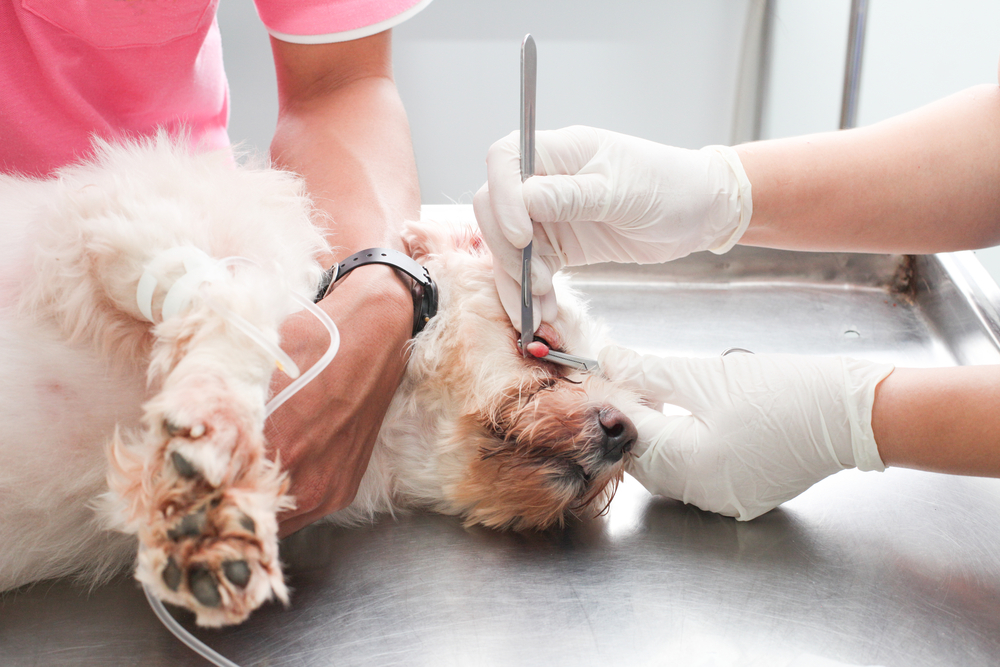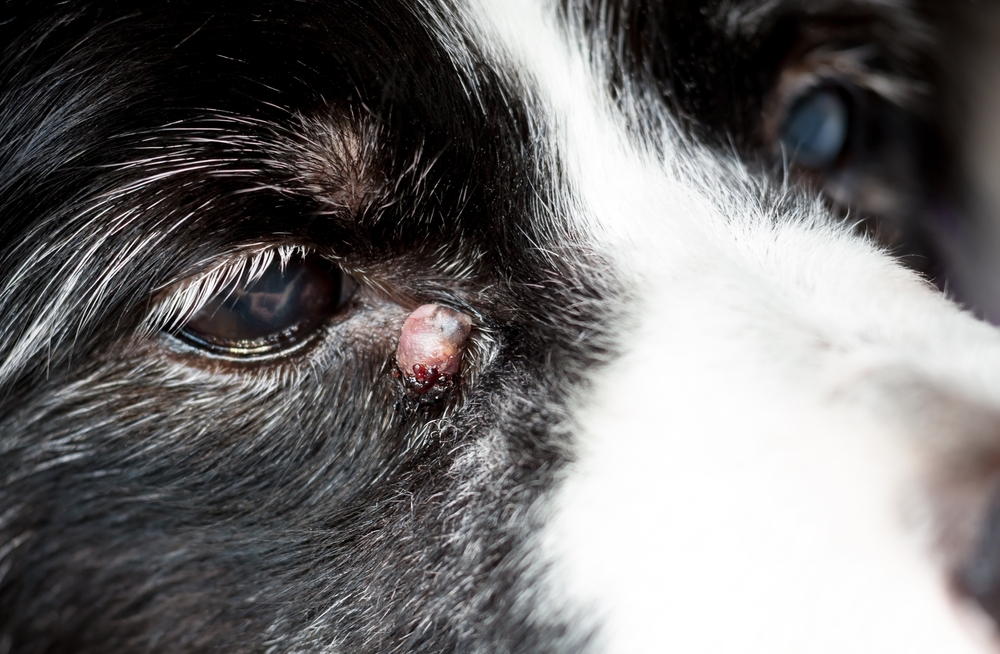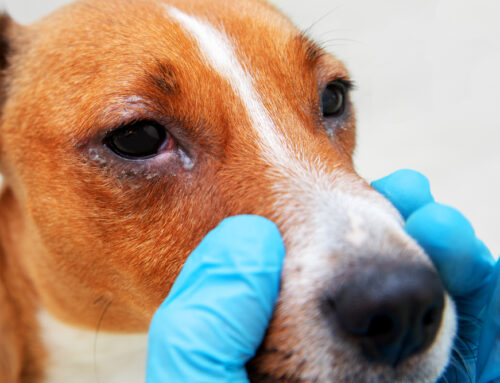Eyelid masses, while sometimes alarming, are a relatively common occurrence in dogs. Understanding the causes, symptoms, and treatment options can equip you to act quickly and provide the best possible care for your beloved pet.
What Are Eyelid Masses in Dogs?
Eyelid masses, also sometimes referred to as eyelid tumors, present as abnormal growths on or within the eyelid. While the term “tumor” often sparks concern, it’s important to remember that not all masses are cancerous. Some are benign, meaning they are non-cancerous and slow-growing, while others may be malignant and require more aggressive treatment. Common types of eyelid masses in dogs include:
- Benign Tumors: These include growths like styes, chalazions (blocked oil glands), and papillomas (wart-like growths).
- Malignant Tumors: These can include mast cell tumors, squamous cell carcinomas, and melanomas, which may spread to other parts of the body.
- Cysts: These are non-cancerous, fluid-filled sacs that can develop on the eyelid.
To determine the nature of an eyelid mass, it’s crucial to seek veterinary care. Our “Services” page provides more information about the diagnostic procedures we offer at Veterinary Vision Center.
Symptoms and Early Detection
Early detection is key to effectively treating eyelid masses in dogs. Regularly inspecting your dog’s eyes can help you identify potential issues before they become more serious. Keep an eye out for the following symptoms:
- Visible lumps or bumps on the eyelid
- Redness or swelling of the eyelid
- Excessive blinking or squinting
- Discharge from the eye
- Rubbing or pawing at the eye
- Changes in eye appearance, such as bulging or drooping
If you notice any of these symptoms, it’s important to schedule an appointment with your veterinarian or a veterinary ophthalmologist as soon as possible. For more resources on eye health in dogs, visit our “Helpful Links” page.
Causes of Eyelid Masses
The underlying causes of eyelid masses in dogs can vary. While the exact cause may not always be clear, several factors can contribute to their development, including:
- Genetics: Certain breeds, like Cocker Spaniels, Poodles, and Shih Tzus, may be predisposed to developing specific types of eyelid masses.
- Environmental Factors: Exposure to irritants, UV radiation, or certain viruses may increase the risk of developing eyelid masses.
- Age: Older dogs are more likely to develop eyelid masses, particularly certain types of tumors.
Diagnostic Procedures
Since it can be difficult from appearance alone what type of mass you are seeing, using some diagnostic tools can help us understand the type and severity of an eyelid mass. Only with a diagnosis can we start to formulate a treatment plan catered to the type of mass. At Veterinary Vision Center, we utilize advanced diagnostic procedures to evaluate your dog’s condition thoroughly. These may include:
- Physical Examination: A comprehensive eye exam helps assess the overall health of your dog’s eyes and identify any abnormalities.
- Biopsy: This involves taking a small tissue sample from the mass to examine it under a microscope. This helps determine if the mass is benign or malignant and guides treatment decisions.
- Imaging: In some cases, imaging techniques like ultrasound or X-rays may be used to determine the size and extent of the mass and check for any spread to surrounding tissues.
Treatment Options

The appropriate treatment for an eyelid mass depends on several factors, including the type of mass, its size and location, and your dog’s overall health. Treatment options may include:
- Surgical Removal: This is often the preferred treatment for most eyelid masses, especially if they are causing discomfort or interfering with vision.
- Cryotherapy: This involves freezing the mass to destroy abnormal cells. It is often used for smaller, benign growths.
- Medications: In some cases, medications like anti-inflammatories or antibiotics may be prescribed to manage inflammation or infection associated with the mass.
Following treatment, your dog may require medication and follow-up appointments to monitor their healing and ensure the mass doesn’t return.
Conclusion
Eyelid masses in dogs can be concerning, but with early detection, proper diagnosis, and appropriate treatment, most dogs can make a full recovery and live happy, healthy lives. At Veterinary Vision Center, our board-certified veterinary ophthalmologist, Dr. Kenneth Pierce, and our experienced team are committed to utilizing the latest advancements in veterinary ophthalmology to diagnose and treat a wide range of eye conditions, including eyelid masses.
If you notice any abnormalities in your dog’s eyes or have concerns about their eye health, please don’t hesitate to contact us. You can learn more about Dr. Pierce, our mission, and our commitment to your pet’s well-being on our “About” page. Your dog’s vision and eye health are our priority, and we’re here to help you every step of the way.







Leave A Comment